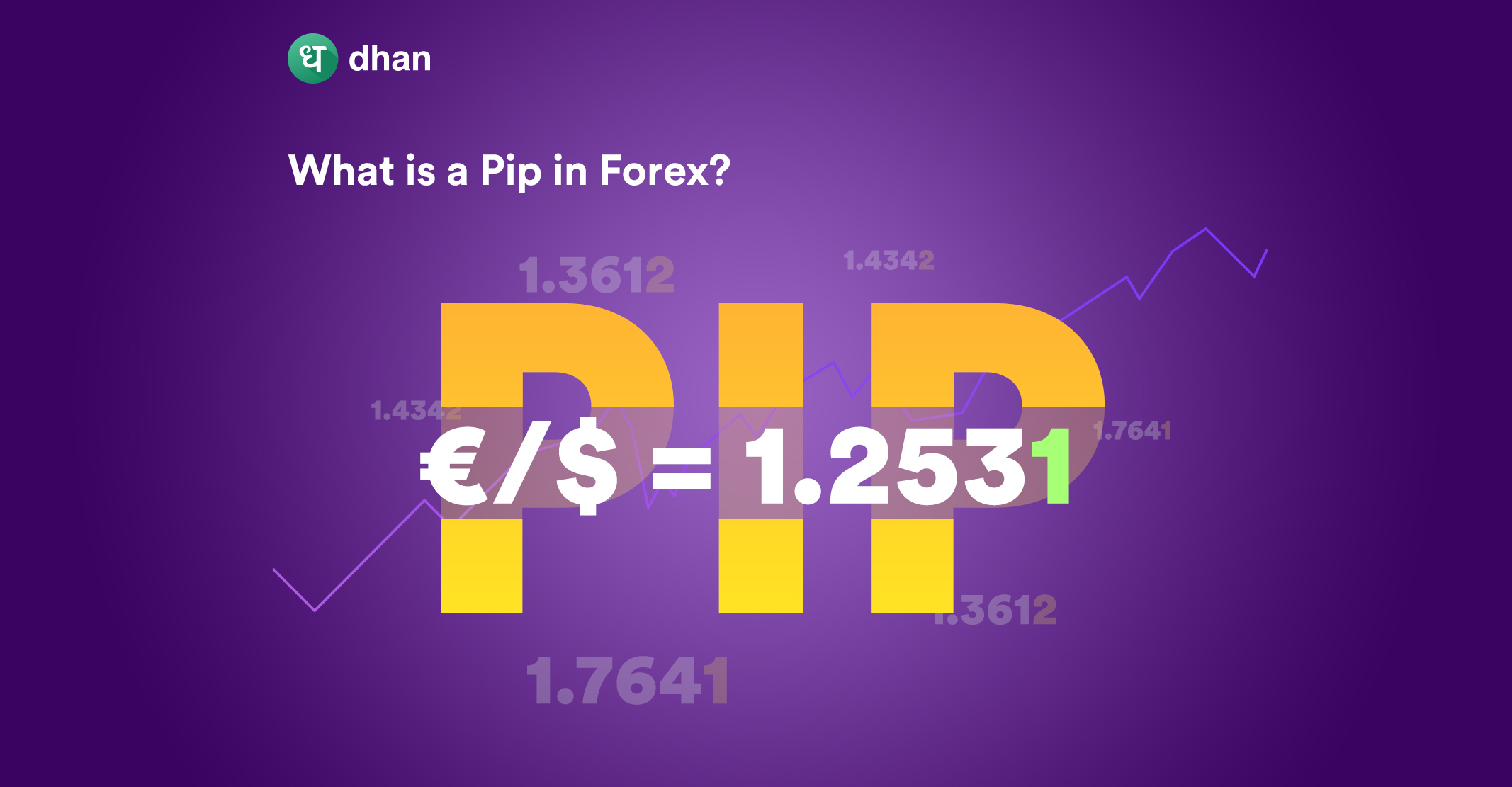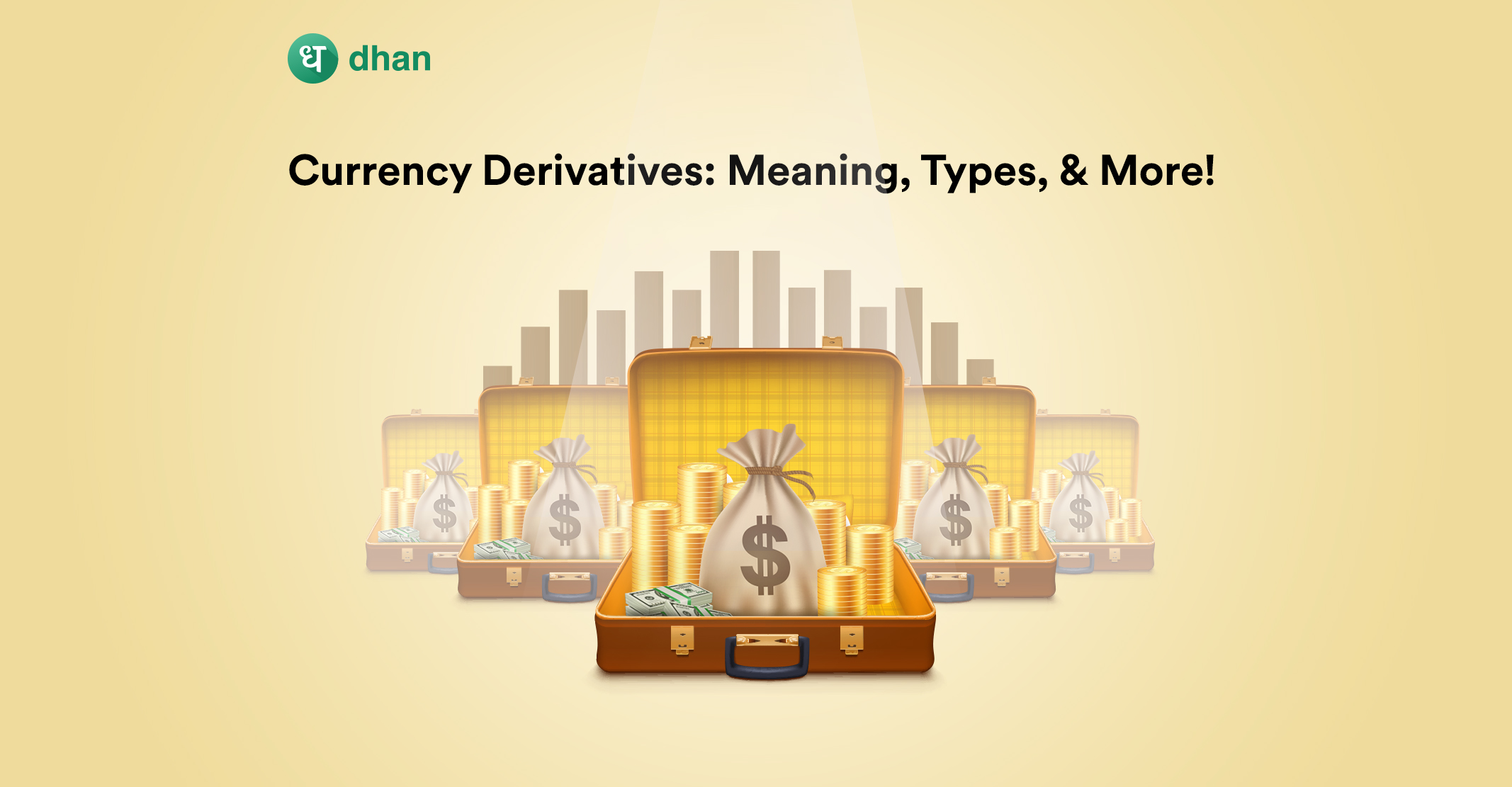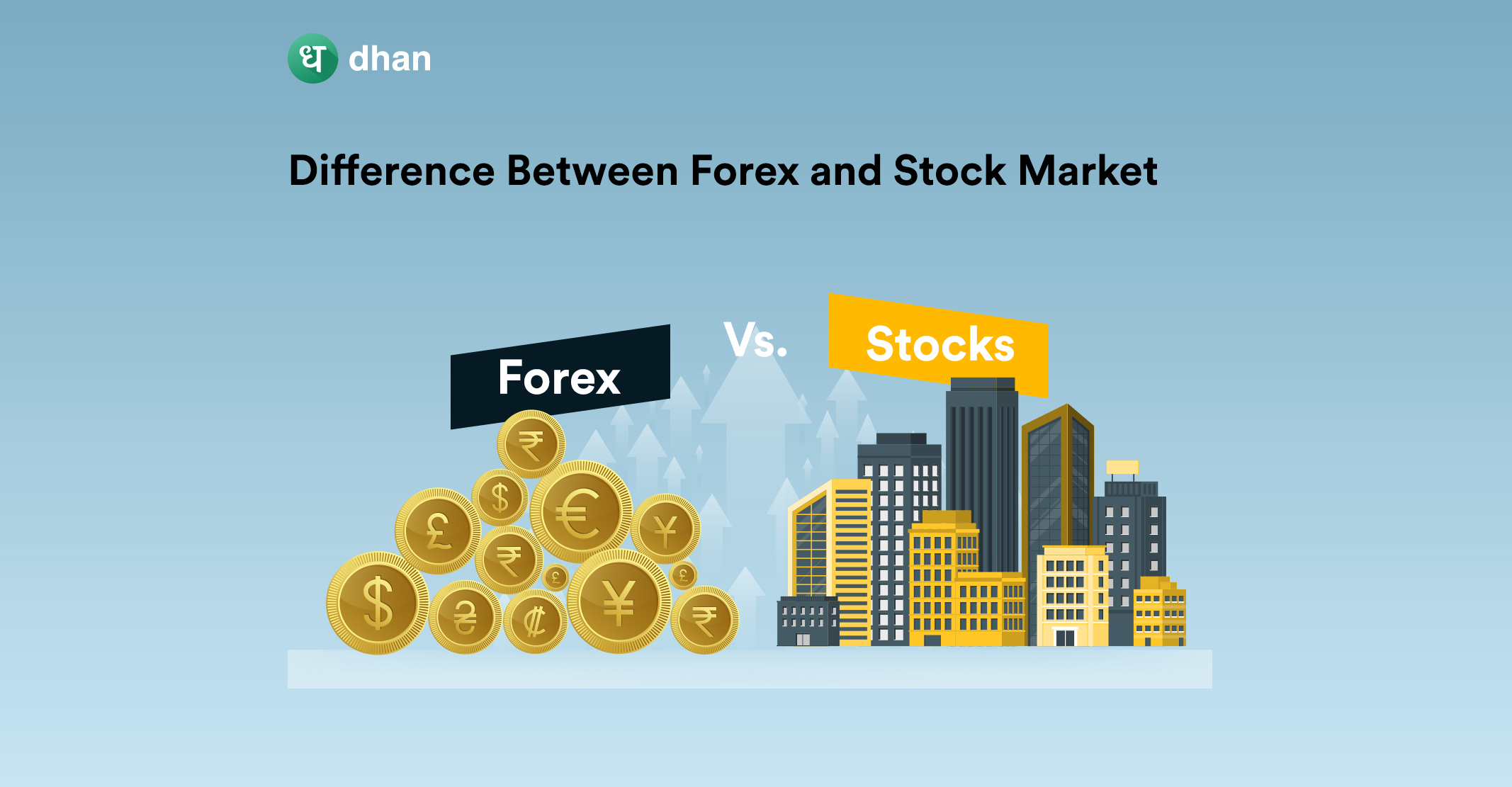What is a Pip in Forex?
In the world of online forex trading, currencies are exchanged in the spot market or the derivatives market in pairs. That’s why there’s an exchange rate. It determines the amount of one currency you need to buy another.
Each currency pair’s exchange rate is known to change, often throughout the day. The smallest unit by which a currency exchange rate can change is known as a Percentage in Point (Pip).
Generally, a Pip in forex means the movement in the fourth decimal place. Let’s take an example. If the exchange rate of EUR-USD goes from 1.0000 to 1.0001, then the pair is said to have moved by one Pip.

If you’re wondering why exchange rates are quoted up to the fourth decimal place, the logic is simple – even the smallest of movements in the exchange rate can have a significant impact on large forex transactions.
Think of a country’s forex reserves or a large bank buying and selling millions worth of currencies.
What we’ve discussed so far about Pips is the norm for all currency pairs except the ones that involve JPY. Wondering what is a Pip in Forex for JPY? While one Pip is 0.0001 for others, for JPY pairs it is 0.01.
How is Pip Value Calculated?
A Pip in forex is generally calculated as 1/100th of 1%. This is equal to 0.0001. However, the value of a Pip depends on the exchange rate of the currency pair in question as well as the lot size or trade value.
Before we move on to the calculations, you need to know this 👉 Currency pairs have a base and quote currency. In EUR-USD, for example, EUR is the base and USD is the quote currency.
It’s important to know this because there are four ways in which you can calculate the value of a Pip.
Note: The standard forex lot size in India for most currency pairs is 1000. However, this is known as a micro lot in the global forex trading market. We’ll stick to 1000 because it’ll be easier for Indian readers!
1. Quote Currency is USD
In a scenario where the quote currency is the USD, the Pip value will be lot size multiplied by 0.0001, which means the value of one pip will always be equal to $0.1. Here’s a table of pip values in forex trading for quotes in USD.
| Movement in Pips | Value of Pip (in $) |
| 1 | 0.1 |
| 10 | 1 |
| 100 | 10 |
| 1000 | 100 |
2. Base Currency is USD
There’s also another way to calculate the Pip value. But that’s for pairs in which USD is the Base currency. All you have to do to get the pip value is follow the steps below:
- Divide one pip by the exchange rate
- Multiply the result of #1 by lot size
If you’re trying to calculate the Pip value for USD-CHF, then simply divide 0.0001 by 0.9671 and multiply 1000. You’ll get a Pip value of $0.1034. Thus, a movement of a single Pip will result in a gain or loss of $0.1034.
3. INR Pairs
We’re on INR pairs now! A standard Pip (Tick) in India for INR pairs is equal to 0.0025. To get the Pip value, simply multiply one Pip by the lot size:
0.0025 x 1000 = Rs. 2.5
This means that the value of a Pip for all INR pairs is Rs. 2.5, even for USD-INR, EUR-INR, GBP-INR, and JPY-INR.
4. Non-USD Pairs
In case you want to calculate the Pip value for pairs that don’t contain USD (excluding INR pairs) but want the result in USD, do this:
- Find out what one Pip is equal to in the quote currency
- Multiply the Pip with the lot size
- Convert the result into USD with the latest exchange rate
Let’s take EUR-GBP as an example. A pip is 0.0001 and the lot size is 1000. Thus, the pip value for EUR-GBP is:
0.0001 x 1000 = £0.10
The exchange rate of GBP-USD is 1.1369, which means the value of one Pip in USD, in this case, would be $0.11.
Since the exchange rate is likely to vary, the value of a pip will change based on when you’re trying to calculate it, especially for Loonie, Aussie, Kiwi… Wait, don’t know these nicknames? Check out this blog and come back: Forex Nicknames Explained
Why is it Called Pip?
The full form of Pip in forex trading is “Percentage in Point”. Let’s take a step back to understand why. This will help if you want to begin forex trading. A Pip is a small yet convenient unit of measurement as per textbook definition.
In forex trading, the Pip value also represents the smallest yet easiest way to calculate the change in the exchange rate. Furthermore, if the exchange rate moves from 1.0000 to 1.0001, it moves by 0.0001 which we know as a Pip.
But it also moves by 0.01%, which is nothing by the percentage in point movement. If you check the textbook definition of Percentage in Point, it’s the difference between two percentages.
Now, we’re going to tell you a fun fact. One Basis Point or Bip is represented by a 0.01% change in exchange rates, interest rates, and other values of financial instruments expressed as a percentage.
If the value of EUR-USD moves from 1.0000 to 1.0001, you can thus say that it moved by one Bip as well as a Pip. There are other terms that Pip is often confused with or compared with. These are known as Ticks and Points.
Forex Pips vs Points vs Ticks
A Pip is the smallest measurable movement in the exchange rate of a forex pair. It is the fourth number after the decimal point: 0.0001 for most pairs except any JPY pair.
A Tick is similar to a Pip because it’s the smallest measurable movement on the right side of the decimal point, often used in relation to trading currency futures contracts, exchange rates, and the broader market.
In India, the Tick size is equal to 0.0025 and the Pip value is calculated by using it as discussed in this section. Points differ drastically from Pips and Ticks.
A Point is the smallest measurable movement on the left side of the decimal point: 79.8000. That said, Points are also used in relation to futures contracts. Looking to learn more about forex trading? Read these blogs:
- What is Margin in Forex Trading? Everything You Need to Know!
- How Does Leverage in Forex Trading Work?
- Forex Market Hours & Holidays in India for 2022
Disclaimer: This blog is not to be construed as investment advice. Trading and investing in the securities market carries risk. Please do your own due diligence or consult a trained financial professional before investing.



